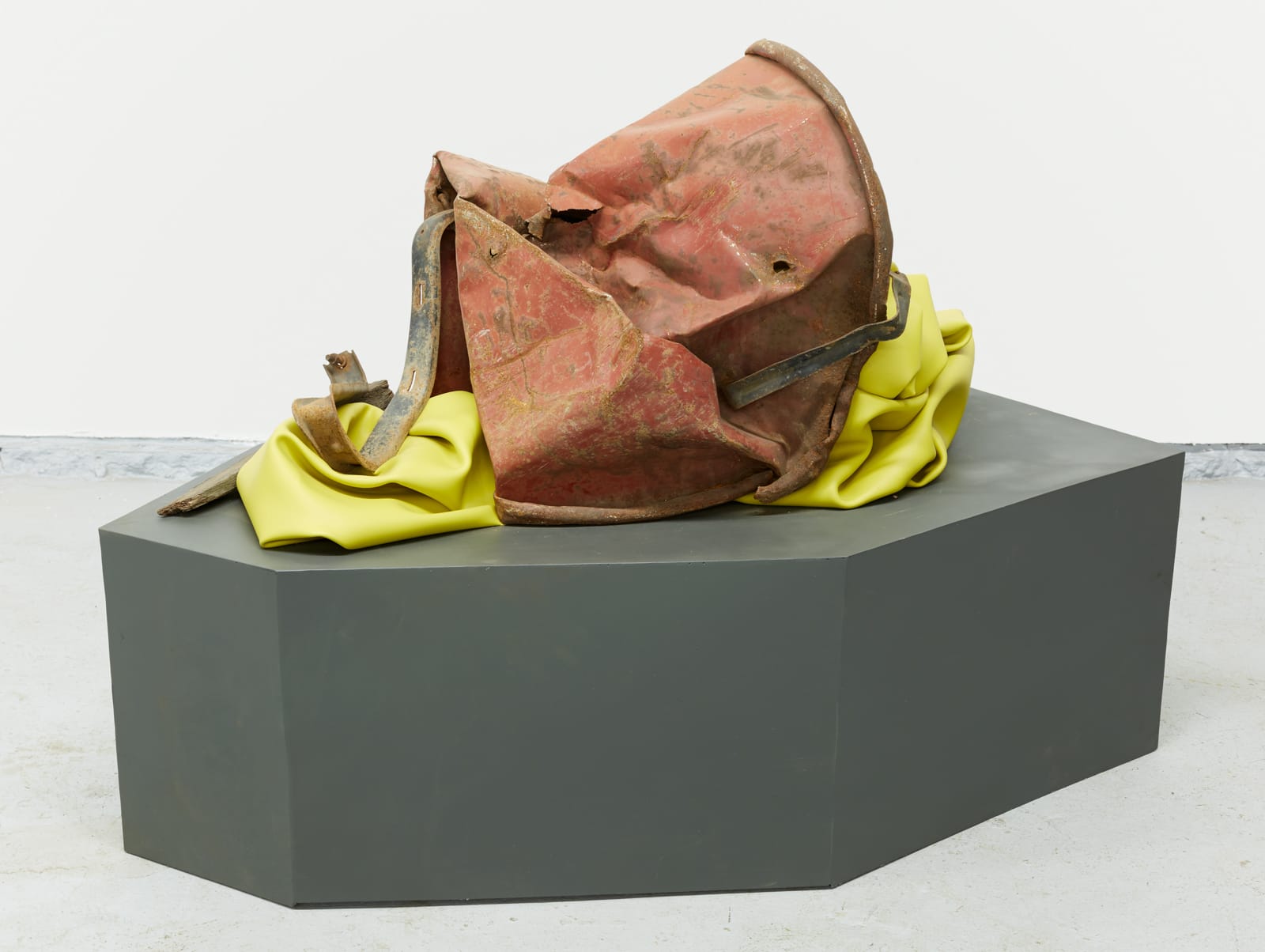-
Artworks
Kennedy Yanko USA, b. 1988
Creamy Haze, 2020Paint skin and metalSculpture: 34" long x 20" high x 26.5" wide
Base: 50.5" long x 31" high x 28.5 in. wide7739Further images
In this sculpture, a formal conversation is happening between the heavily bodied metals and the soft, monochromatic paint skins. Each is simple in their form, but each has a different...In this sculpture, a formal conversation is happening between the heavily bodied metals and the soft, monochromatic paint skins. Each is simple in their form, but each has a different weight. The soft seems to inhabit the hard. Or is the hard protecting the soft, or being invaded by it? Or are they part of the same whole? Beyond the atomic dualities, what’s most important to Yanko are the shadows in the work—the unnoticed spaces between the layers; the discarded, invisible parts that don’t get talked about. The shadows in the work point to the shadow self; they challenge the idea of seeing, or of eyes being the only way to take in knowledge. This work points to a vision beyond what’s seen; vision gained through the full sensory state.
Physicality is essential to Yanko’s sculptural practice. Scouring the urban metal yards and demolition sites of New York City, she seeks out intuitive, physical connections with abandoned materials she can transform in her studio. Yanko’s work has always been about disrupting pre-existing associations. This work welcomes a new paradigm of thinking, in which we consider not only what we are now, but how things have come to us in this moment. And like the paint skins that she adds to her metal pieces, it’s also about how we relate to our surroundings.
“The framework supports the skin,” Yanko says, “and the metal becomes the composition that the skin responds to. There’s this play on how they interact and respond to each other. I’m fascinated with paradox, and seeming opposites, when actually they are so dependent on each other. I’m interested in the moment when they come together in that interdependence. One thing can’t exist without the opposing force.”2of 2





